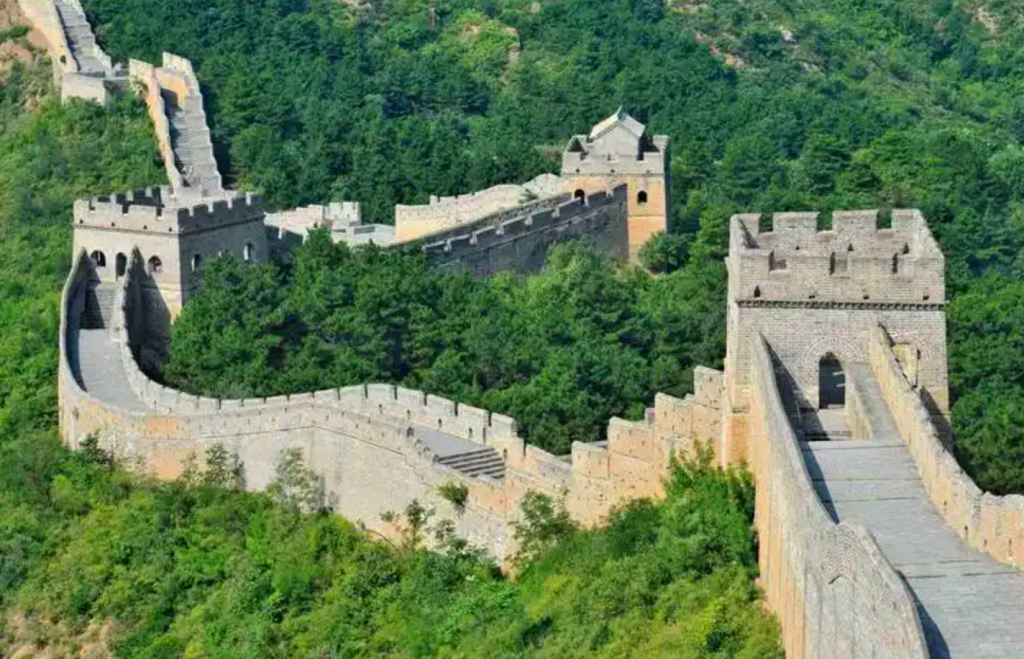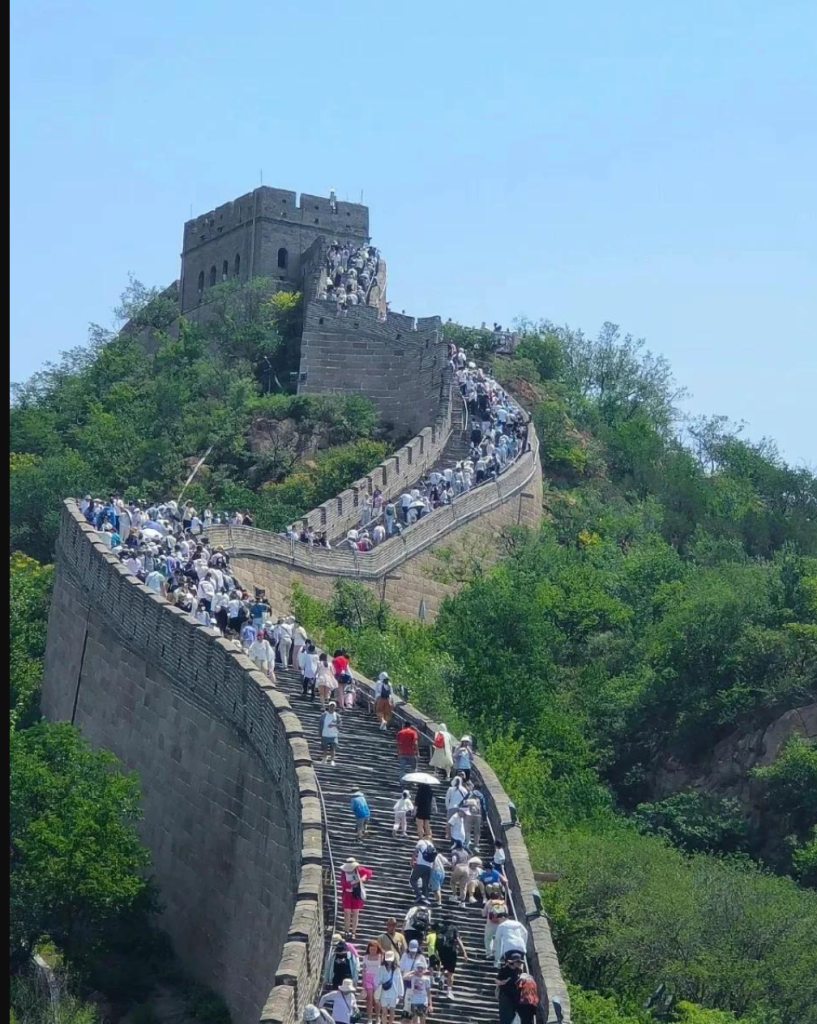The Great Wall of China stretches across mountains, deserts, and plains for thousands of kilometers, but not every section is equally suited for visitors. Some parts are fully restored and convenient, while others are wild and adventurous. Depending on your time, interests, and travel style, different sections will offer different experiences. Below are the most recommended sections of the Great Wall to visit today.

| Section | Distance from Beijing | Highlights | Best For | Special Notes |
|---|---|---|---|---|
| Mutianyu | ~75 km / 1.5–2 hrs | Well preserved, 90% forest coverage | Families, first-time visitors, photographers | Cable car, chairlift, and toboggan available |
| Badaling | ~70 km / 1–1.5 hrs | Most famous, wide and majestic | Tourists with limited time, seniors, groups | Can be very crowded; summer night tours offered |
| Jinshanling | ~140 km / 2.5 hrs | Mix of restored & wild walls, panoramic ridges | Hikers, photographers | Best for sunrise/sunset views, long hikes |
| Simatai | ~120 km / 2–3 hrs | Steep, rugged, retains Ming features | Adventure travelers, night visitors | Only official night-tour section; near Gubei Water Town |
| Huanghuacheng | ~80 km / 1.5–2 hrs | Lakeside views, quiet, partly unrestored | Nature lovers, photographers | Unique water-reflection scenery, less crowded |
| Jiankou | ~70 km / 2–3 hrs + hike | Wild & challenging, broken towers | Experienced hikers, adventurers | Not fully developed; safety caution required |
| Shanhaiguan | ~300 km / full day+ | “First Pass Under Heaven,” wall meets the sea | History enthusiasts, culture seekers | Old Dragon’s Head stretches into the Bohai Sea |
Mutianyu – Best for Families and Scenic Views
Mutianyu, about 75 kilometers northeast of Beijing, is one of the most popular sections for international travelers. It is famous for its beautiful scenery and dense vegetation, with over 90% of the area covered by forest. The wall here is well preserved and less commercialized than Badaling, offering a more relaxed atmosphere.

Facilities such as a cable car, chairlift, and toboggan slide make it especially family-friendly. Because of its accessibility and natural surroundings, Mutianyu is often described as both authentic and comfortable. Travel time from downtown Beijing is around one and a half to two hours.
Badaling – The Most Famous and Majestic Section
Badaling is the most visited section of the Great Wall, located around 70 kilometers from Beijing. It was the first section opened to tourists and remains the most iconic. Badaling is well restored, wide, and easily accessible, making it suitable for visitors of all ages.

Its reputation as the “majestic” part of the Wall also means it can be extremely crowded, especially during weekends and public holidays. Recently, Badaling has also introduced night visits during summer and holiday seasons, allowing travelers to experience the Wall illuminated against the night sky.
Jinshanling – Paradise for Hikers and Photographers
Jinshanling lies about 140 kilometers northeast of Beijing and takes around two and a half hours to reach by car. It is considered the best section for hiking and photography, thanks to its dramatic ridgelines, mixture of restored and unrestored walls, and breathtaking sunrise and sunset views.
The trail from Jinshanling to Simatai is one of the most famous Great Wall hikes, offering a balance between accessibility and adventure. For travelers who want to experience both the grandeur and the raw, wild side of the Wall, Jinshanling is hard to beat.
Simatai – Night Views and Rugged Beauty
Simatai, also northeast of Beijing, is known as the only section officially open for night tours. The wall is steep and rugged, preserving much of its original Ming Dynasty appearance. By day, it offers spectacular mountain views; by night, it becomes a magical experience, lit up against the stars.
At the foot of Simatai lies Gubei Water Town, a scenic resort styled after traditional northern Chinese towns, where visitors can stay overnight and combine sightseeing with cultural activities. Travel time from Beijing is about two to three hours.
Huanghuacheng – Lakeside Views and Quiet Charm
Huanghuacheng, also known as the “Lakeside Great Wall,” is about 80 kilometers north of Beijing. Here, parts of the Wall are partially submerged in water, creating unique reflections and stunning photographs. Unlike the heavily restored areas, Huanghuacheng remains relatively quiet and less commercialized, making it an ideal choice for travelers who prefer peace and nature.
Jiankou – The Wild and Untamed Wall
For experienced hikers and adventure seekers, Jiankou offers one of the most dramatic and challenging sections of the Great Wall. Located in a mountainous area about 70 kilometers from Beijing, it features steep climbs, broken towers, and unrestored walls.
This section is not officially developed for mass tourism, so it requires caution and preparation. However, its rugged beauty and panoramic views attract many professional photographers and hikers who seek the most authentic Great Wall experience.
Shanhaiguan – Where the Wall Meets the Sea
Located in Qinhuangdao, Hebei Province, Shanhaiguan is far from Beijing but historically significant. Known as the “First Pass Under Heaven”, it is where the Great Wall extends into the Bohai Sea at the site called the Old Dragon’s Head. This unique setting makes Shanhaiguan a symbol of the Wall’s vast reach and an excellent destination for history enthusiasts.
Choosing the Right Section for Your Visit
- Short trips from Beijing: Mutianyu and Badaling are the most convenient.
- Hiking and photography: Jinshanling, Simatai, and Jiankou provide the best landscapes.
- Unique experiences: Simatai for night tours, Huanghuacheng for lakeside views, and Shanhaiguan for the sea.
No matter which section you choose, visiting the Great Wall is a journey into history and a chance to experience one of the greatest achievements of human civilization.